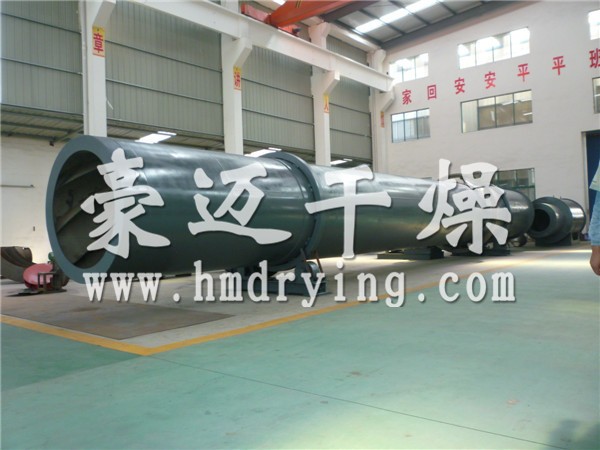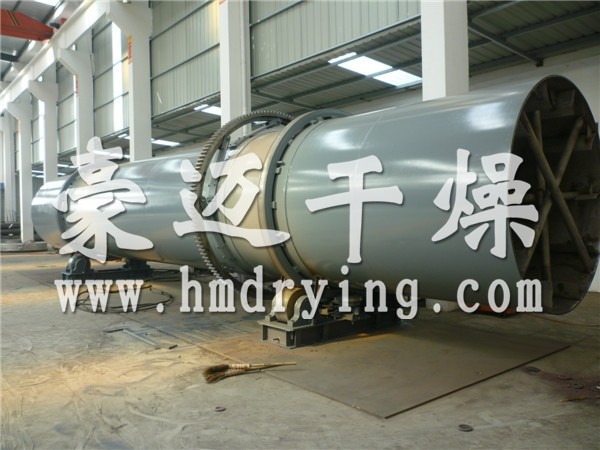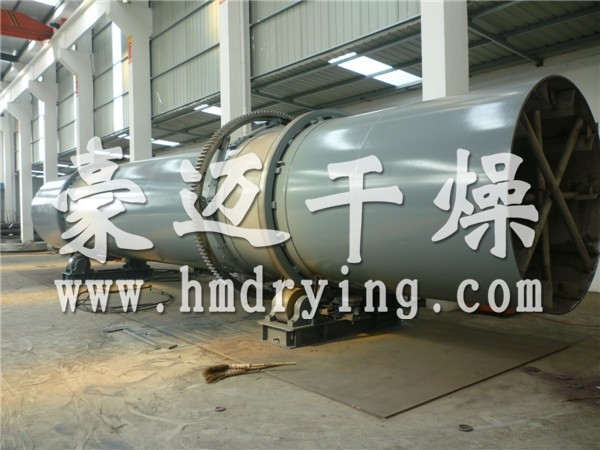Description
Classification: chemical engineering industry
Case overview: Feldspar powder drum dryer (also known as feldspar powder drum dryer, feldspar powder rotary dryer, etc.) is a contact type of internal heating conduction type drying machinery. In the drying process, heat is transferred from the inner wall of the drum to its outer wall, passing through the dried food materials attached to the outer wall of the drum, and evaporating the moisture on the materials. It is a continuous drying production machinery.
Overview of feldspar powder:
feldspar powder is the powder of feldspar. Feldspar is an aluminosilicate mineral of alkali metal or alkaline earth metal such as potassium, sodium, calcium and barium. Its main components are SiO2, Al2O3, K2O, Na2O and Cao
In the drying process, heat is transferred from the inner wall of the drum to its outer wall, passing through the dried food materials attached to the outer wall of the drum, and evaporating the moisture on the materials. It is a continuous drying production machinery.
Working principle of rotary drum dryer for feldspar powder:
Hot air enters from the feed end or discharge end and is discharged from the upper part of the other end. The cylinder is equipped with a forward feed plate, so that the material can be continuously picked up and sprinkled during the cylinder rotation, so that it can fully contact with the hot air flow, so as to improve the drying efficiency and make the material move forward. The heat source of drying materials is generally hot air, high temperature flue gas, steam, etc.
Working process of drum dryer:
Between 120 ℃ and 150 ℃, the material is heated by the simple wall during the rotation of the drum, so that the wet separation and vaporization can be realized. In one rotation cycle, the rolling cylinder completes the process of film distribution, vaporization and dehydration. The dried materials are scraped off by a scraper, and then transported to the storage tank of finished products by screw, and then crushed or packaged directly. The water evaporated in heat transfer can be introduced into the corresponding treatment device for dust capture or emission according to its nature.
Notes for feldspar powder rotary drum dryer:
The dryer has high processing capacity, low fuel consumption and low drying cost. The dryer has the characteristics of high temperature resistance, which can use high temperature hot air to quickly dry materials. It has strong expansibility, and the production allowance is considered in the design. Even if the output increases slightly, there is no need to replace the equipment. The equipment adopts the structure of self-aligning tugboat. The tugboat and the rolling ring match well, which greatly reduces the wear and power consumption. The specially designed block wheel structure greatly reduces the horizontal thrust caused by the tilting operation of the equipment. It has strong overload resistance, stable operation and high reliability.
The water evaporation capacity of drum dryer is generally 30-80kg / m3 · h; it increases with the increase of hot air temperature and changes with the moisture properties of materials. It has higher evaporation intensity than flash drying and spray drying. The thermal efficiency is generally 40% - 70%. It has the following characteristics:
High thermal efficiency of rotary drum dryer for feldspar powder
Because the dryer is heat conduction, the heat transfer direction is basically consistent throughout the heat transfer cycle. Therefore, most of the heat supplied in the drum is used for the wet separation and vaporization of materials, and the thermal efficiency reaches 80% - 90%.
The drying rate of feldspar powder rotary drum dryer is high
The heat and mass transfer process of the wet film on the cylinder wall has the same direction from the inside to the outside, and the temperature gradient is large, so that the evaporation intensity on the surface of the film is high, which can reach 30-70 kg / (M2 · h).
The drying quality of feldspar powder rotary drum dryer is stable
Because the heating mode is easy to control, the temperature inside the cylinder and the heat transfer rate of the wall can be kept relatively stable, so that the material film is dried in the heat transfer state, and the product quality can be guaranteed.
However, the drum dryer also has its disadvantages, mainly because the surface humidity of the drum is high, some products will be damaged by overheating or abnormal color. In addition, if the vacuum dryer is used, the cost is high, and it is only suitable for the treatment of materials with very high heat sensitivity.
Application scope of feldspar powder rotary drum dryer:
Scope of application: 1. Chemical industry, miner, metallurgy and other industries, such as ore, slag, coal, metal powder, clay, diatomite, kaolin. 2. Agriculture, feed and fertilizer industries, such as straw, grass, leaves, fish meal, corn paste, starch residue, distiller's grains, medicine residue, fruit residue, soy sauce residue, sugarcane bagasse, peat, organic compound fertilizer, sludge, aquatic product waste, food factory waste, slaughterhouse waste, organic fertilizer, inorganic fertilizer, phosphate fertilizer ammonium sulfate. 3. Dryer for powder and granular materials with special requirements. Such as various crystals, light calcium carbonate, activated clay, magnetic powder, graphite, inorganic mud, clay, lime slurry, ore slurry, phosphorus slag, aluminum red mud. 4. Materials requiring low temperature drying and mass continuous drying. The choice of heat carrier and its temperature depends on the nature of the solid material to be treated and whether it is allowed to be polluted or not. 1) If the treated solid material is not afraid of high temperature and is not the product after the treatment, it can be slightly polluted in the process of treatment. If hot blast stove or flue gas can be used as heat carrier, higher volumetric evaporation rate and thermal efficiency can be obtained. For example, for the drying of materials with high inlet water content, the volumetric evaporation rate of the dryer is 5kg / m3 / h and the thermal efficiency is 30% - 50% when the gas inlet temperature is 300 ℃; if the gas inlet temperature is 500 ℃, the volumetric evaporation rate is 35kg / m3 / h, and the thermal efficiency is 50% - 70%. Therefore, the rotary dryer bucket for processing ore, sand, coal, calcium superphosphate sulfate and other materials is equipped with a combustion furnace that directly generates flue gas. The gas fuel can be coal, oil, natural gas, liquefied gas, etc. 2) If the material to be treated is not allowed to be polluted and the required temperature is high, we can use our new product gas generator as heat carrier. This product is energy-saving, environmental protection and high thermal efficiency. If the local environmental protection requirements are very high, and want to save energy and sanitation, using gas generator will be the choice. In terms of energy saving, the gas producer can save at least 20% more than that of the combustion furnace, and it also saves a lot of labor. Generally, the gas generator can be operated with one person working, and does not need to continuously add coal. In addition, the gas generator can be used as soon as it stops, and it can not work for up to 10 days, and it can continue to be used next time. 3) Indirect heating is also useful, that is, the heat is transferred from the metal wall to the material to be dried, such as external heating rotary dryer
1. From the form of raw materials, centrifugal dehydration filter cake, pressure filter cake; the drying of powder, particle, sheet, fiber and other materials that can flow freely.
It is widely used in the drying of mineral products, building materials, chemical products, compound fertilizer, organic powder, feed, wine tank, starch residue, corn residue, soybean residue, etc.
From the mechanism of rotary drum dryer, it can be divided into direct and indirect heating, ventilation pipe heating, steam pipe indirect heating, compound heating and so on.
In principle, the higher the temperature, the higher the evaporation intensity. Therefore, the equipment is small in size, low in investment and low in unit energy consumption.








